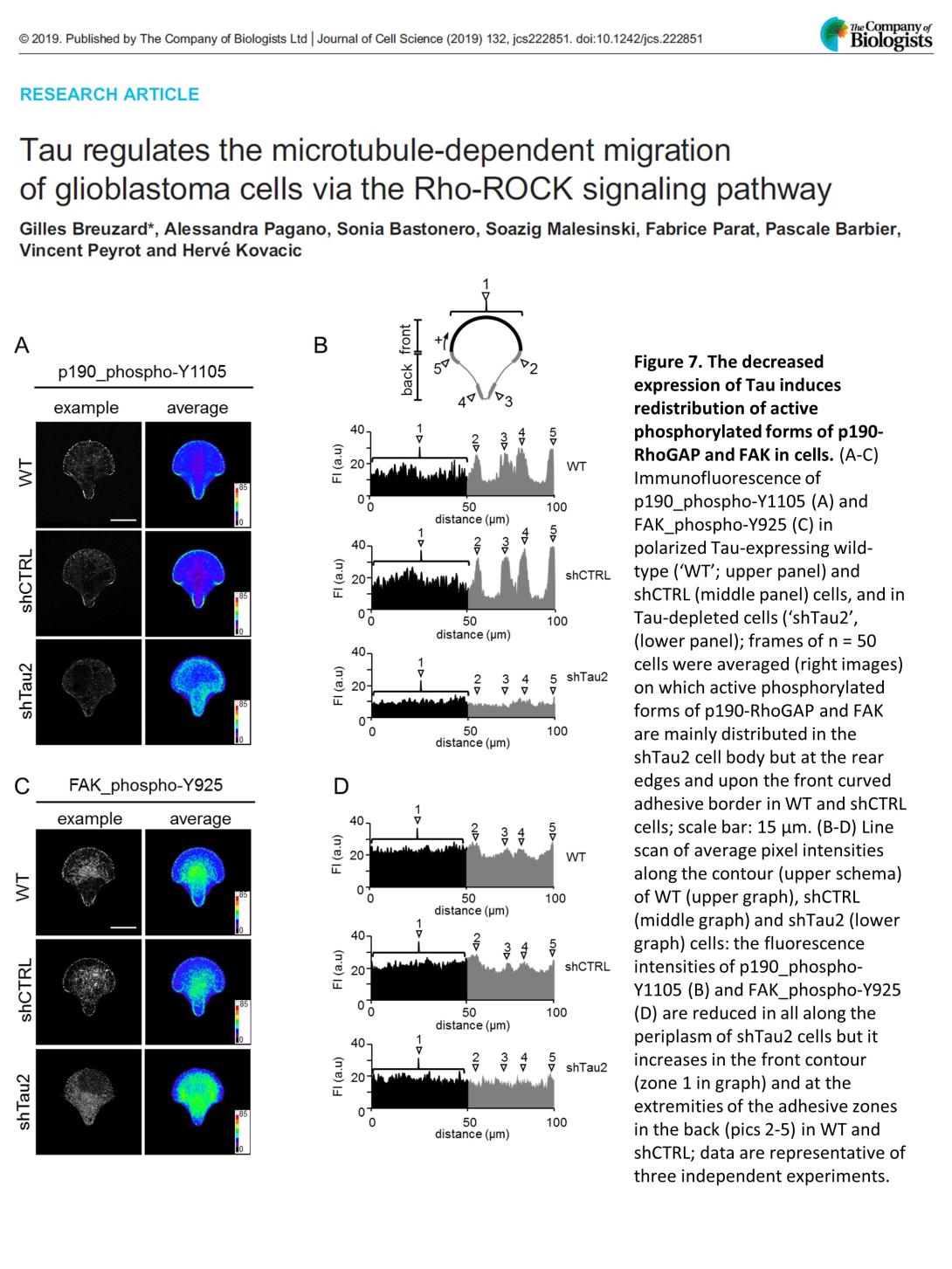Research area 1: Screening of new anti-tumor compounds: therapeutic benefits of thiazoloflavonoids targeting Tau in glioblastoma
In collaboration with Dr. Maxime Robin of the Mediterranean Institute of Biodiversity and marine and continental Ecology (IMBE CNRS UMR7263, IRD237, AMU), we are designing, synthesizing and characterizing compounds targeting the Tau protein (Rayane Hedna's thesis, defended in 2023; Emmanuelle Relave's thesis, ongoing, see Emmanuelle Relave | Institute of NeuroPhysiopathology). Our initial results show strong therapeutic potential on cancers expressing this protein, such as glioblastoma (Hedna et al, Int J Mol Science, 2023; Relave et al, Int J Mol Science, 2024). Today, we are pursuing this work by evaluating the contribution of these thiazoloflavonoids in monotherapy or in combination with temozolomide, as well as understanding their mode of action in order to further improve their chemical formula.
Research area 2: Brain cancers and tumor progression: biophysical approach to the interaction between Tau, microtubule and actin in the cancer cell
Despite extensive studies, the molecular mechanisms by which Tau binds to its targets, notably microtubules, and its role in the cell remain poorly understood. In this area of research, we have identified by several fluorescence imaging methods (FRET and FRAP), a discrete Tau - microtubule interaction, in which Tau appears to induce conformational changes in the cytoskeleton, promoting the recovery of microtubule assembly (Breuzard et al, J Cell Science, 2013). Recently, we have also shown in a cell model derived from glioblastoma that Tau is a protein required for the coordination of cell movement during migration, notably by controlling the level of actin polymerization via the Rho-ROCK signaling pathway (Breuzard et al, J Cell Science, 2019). The aim of this Research area is to understand how Tau regulates the “crosstalk” between the two cytoskeletons (microtubule and actin) during cell migration: (1) by characterizing the interaction of Tau with microtubules and actin filaments directly in the cell; (2) by determining the impact of anticancer agents on this co-interaction; and (3) by exploring the impact of Tau phosphorylation (AT8 residue, glioblastoma prognostic markers) in this crosstalk. The methodologies of this project will involve a combination of biological models (several cell types from glioblastoma expressing Tau protein) and high spatial resolution optical instrumentation, such as FRET and FRAP imaging.


